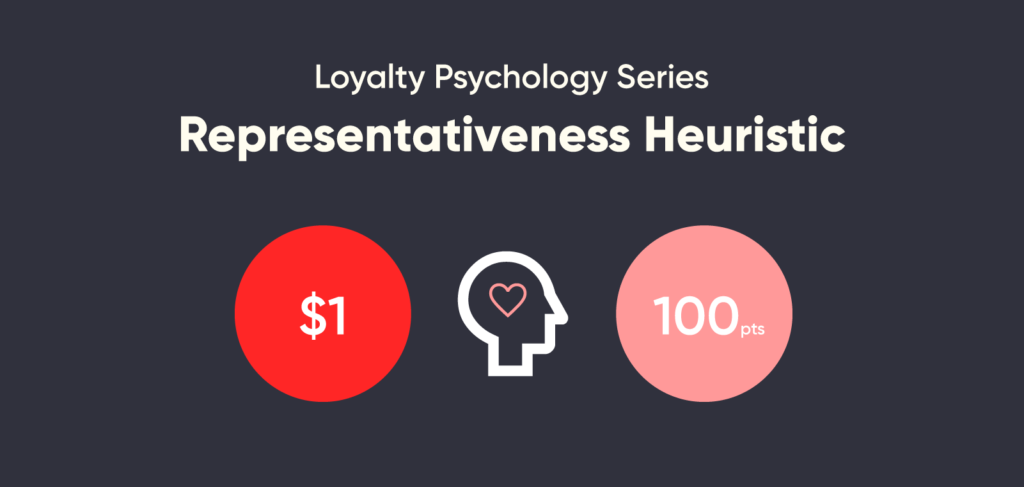
Influencing consumer behaviour
Loyalty programs aim to influence consumer behaviour. Therefore, understanding how consumers make decisions and the factors that influence decision making is an important area of research for loyalty program designers and operators.
One area of psychology which warrants more comprehensive review is the effect of heuristics and behavioural biases which underpin the way consumers inherently behave.
Heuristics and biases
A heuristic is defined as a mental shortcut that allows people to solve problems and make judgments quickly and efficiently. Heuristics form because consumers do not have the capacity, time or motivation to recognise and evaluate all the available information in their complex environment.[1]
Psychological biases, or cognitive biases, are defined as thinking patterns based on observations and generalisations that may lead to memory errors, inaccurate judgments, and faulty logic (Evans et al,[2]), causing consumers to make decisions without looking at the bigger picture.
While the influence of biases and heuristics can introduce information asymmetries and inaccuracies, and may lead to irrational decisions, they are deemed necessary to reduce the complexity of everyday decision-making processes by reducing the effort associated with cognitive tasks. Shah and Oppenheimer (2008)[3] stated that effort reduction relies on at least one of the following principles; examining fewer cues, reducing the difficulty associated with retrieving and storing cue values, simplifying the weighting principles for cues, integrating less information and examining fewer alternatives.
Kahneman & Tversky
In the early 1970s, Kahneman & Tversky[4] introduced their foundational studies on biases and heuristics. They identified the concept of heuristics, and how cognitive biases stem from the reliance on judgemental heuristics. They proposed a number of heuristic principles which explain the ways in which people assess probabilities and predict values to arrive at their choices.
The representativeness heuristic
One of their primary heuristics was the representativeness heuristic. This occurs when people compare and categorise objects based on a limited number of similarities, rather than using objective statistics or knowledge.[5] One example of the representativeness heuristic relates to the judgement of value and size, where consumers misjudge the relationship between the two, thinking one directly resembles the other. To calculate how big something is, consumers may categorise this as ‘lots’, mistaking ‘lots’ for ‘big’. For example, a pile of one thousand 1c coins can somehow seem more than a ten dollar note.
The representativeness heuristic is utilised by points and miles loyalty programs. Program operators appeal to this heuristic by attempting to make the value of a reward appear bigger than it really is. For example, if a member spends $100 with a retailer and that retailer rewards them with 1 per cent of the total spend, then the member will receive $1 of value back, which may not sound very rewarding to the member. But if it is part of a loyalty program, the member can earn one hundred points (at 1c per point, which is equal to $1). By applying the representativeness heuristic, ‘one hundred’ points may be perceived as significantly bigger than ‘one’ dollar, making the member feel that the reward they have received is bigger than in reality.
The reverse is also true. Research on consumer processing of pricing information by Coulter and Coulter (2005)[6] determined that consumers are frequently unaware of how their price and value inferences are derived. They may typically be unable to articulate the exact reasons why some aspect of the way price is presented translates into lower (or higher) perceived value. Their research determined that consumers could perceive product prices to be smaller simply by displaying the price in a smaller font size.
[1] Changing Minds, The Size Heuristic, http://changingminds.org/explanations/decision/size_heuristic.htm, accessed 29 May 2019.
[2] Evans, J. St. B. T., Barston, J. L. & Pollard, P., 1983, ‘On the conflict between logic and belief in syllogistic reasoning. Memory & Cognition, Vol 11, Iss 3, pp295-306.
[3] Shah, A. K., Oppenheimer, D.M., 2008, ‘Heuristics made easy: An effort–reduction framework’, Psychological Bulletin, Vol 134, pp207–222.
[4] Tversky, A. & Kahneman, D., 1974, ‘Judgment under Uncertainty: Heuristics and Biases’, Science, Vol 185, Iss 4157, pp1124–1131.
[5] Kahneman, D. &Tversky, A., 1972, ‘Subjective probability: A judgment of representativeness’, Cognitive Psychology, Vol 3, Iss 3, pp430–454.
[6] Coulter, K. & Coulter, R., 2005. ‘Size Does Matter: The Effects of Magnitude Representation Congruency on Price Perceptions and Purchase Likelihood’, Journal of Consumer Psychology, Vol 15, pp64-76.

